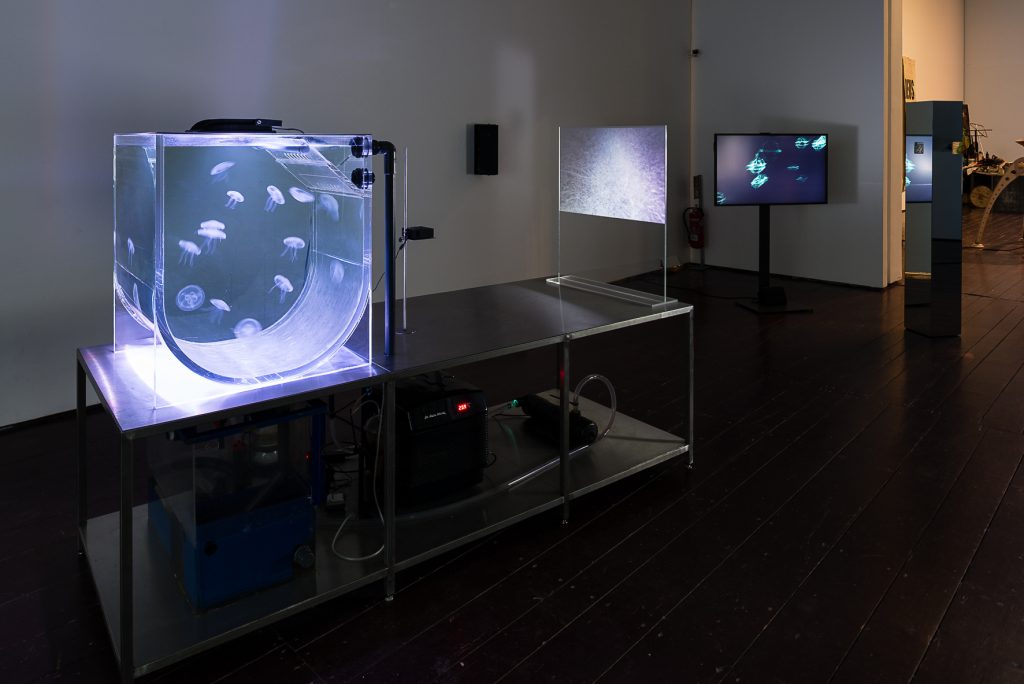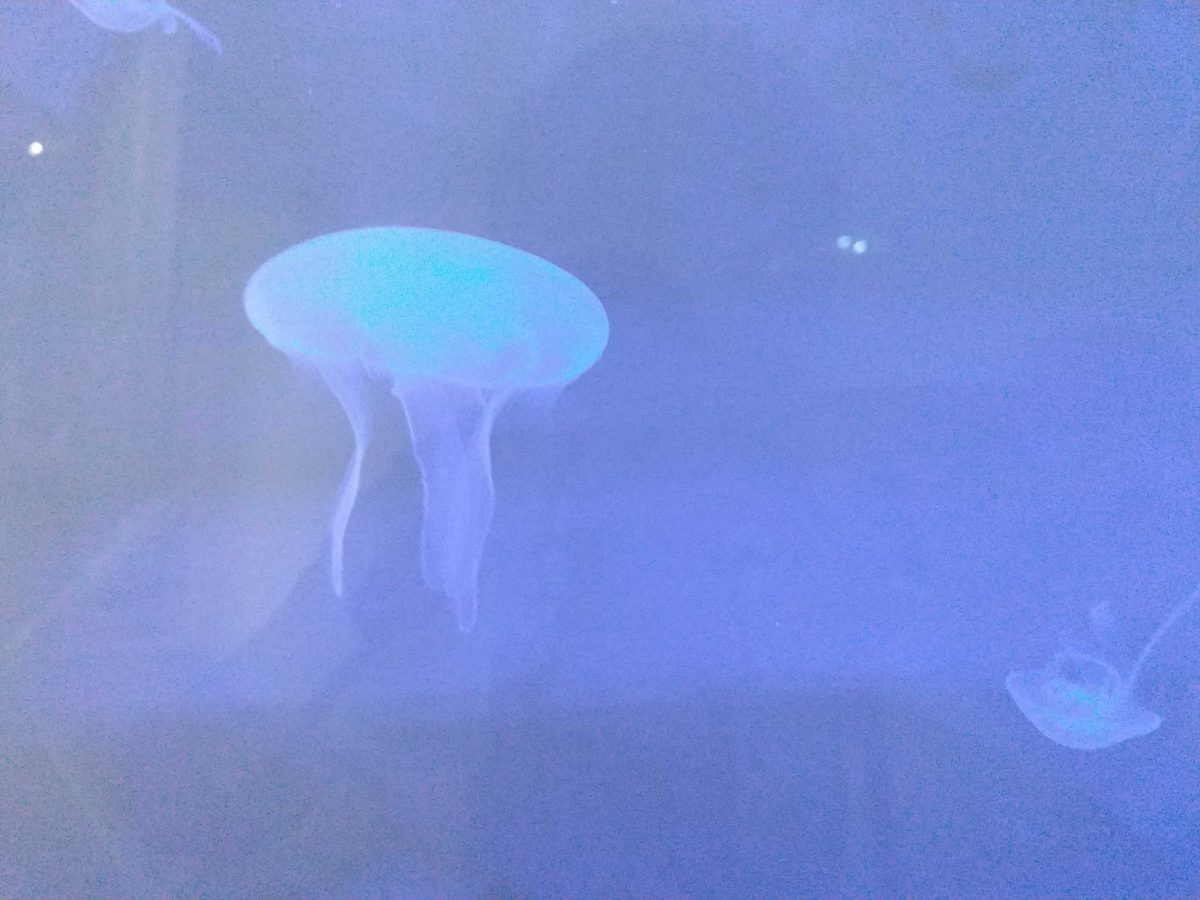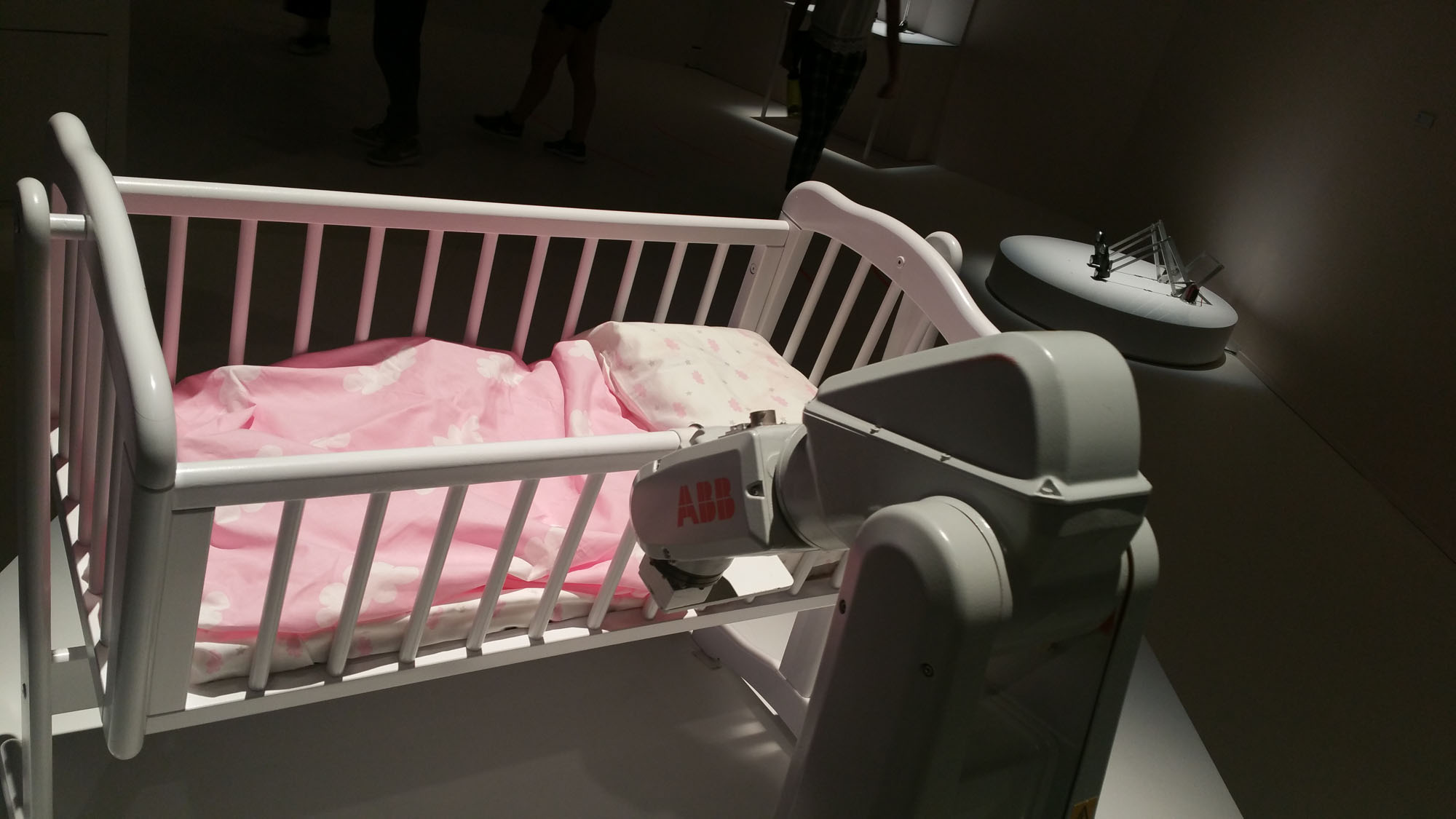The Oceanic Event was an informative and critical event that underlines the stories that have been happening to the Pacific Ocean. A group of artists, filmmakers, composers, and researchers travel to Papua New Guinea, French Polynesia, and Fiji to explore and engage with the culture that relies on the Pacific Ocean. It gave an in-depth presentation and an inside look into these complex tradition and shine a light on the oceanic ecosystem eroded by humans activities.

One of the artworks that truly caught my eyes was “Tamoya Ohboya” by Tue Greenfort. Besides the fact that it was placed near the entrance, what really attracted me to this artwork was the fascination of using living things as a statement. From the image above, the work consists of a tank and a pump to keep the water in the tank circulating, mimicking the ocean. Meanwhile, a video was projected onto a white screen, showing the audience the close up of the jellyfish. This brought me to the attention the huge amount of effort it took for Tue Greenfort to replicate the environment that mother nature has provided. From the showcasing of the work, I would infer that the statement was to prove how valuable and vulnerable the environment was, that once the habitat for these creatures was destroyed, it would take us tremendous effort and resources to create what has been lost.

However, I do not believe that that was all to take away from the artwork. “Tamoya Ohboya” was also a study of the ocean. The purpose was to take a cross-section of the ocean and present it to the audiences, giving them a more personal look at these magnificent and beautiful creatures. While other artists have done similar work that also represents the cross-section of the environment, often presented in a form of a sketchbook or photograph, it was refreshing to see that Tue Greenfort eliminated the medium and gave us the “raw” look into the habitat, not through the lenses of an artist or photographer, but with our own eyes.

The talk about the tabu culture has gotten my attention. What at first seems like an irrational tradition for a group to follow seems like a common scene at the end of the talk. I will be giving context to the sentence above. In Fijian culture, a tabu area was considered a ‘holy’ or ‘forbidden’ ground, inaccessible to the public.
From the exhibition booklet, it stated that
Throughout the Pacific, the creation of tabu areas has been practised for a long period of time, including temporarily closing off areas to fishing as a mark of respect for the death of an important community member, to protect sacred sites, to affirm a village’s rights to a fishing ground, or as part of traditional ceremonies.
Such practices turn out to have a positive effect on the habitats as the area was untouched by humans activities and allows an optimum environment for the habitants to strive. Tabu areas were also often too dangerous for people to explore and sealing it off from the public would make sense to avoid any repercussions.
In conclusion, The Oceanic exhibition was one of the most memorable and impressive experiences for me. It has educated me on the negative effects of global warming and how it has affected communities in different part of the world. We should work toward helping out these affect communities but at the same time, understanding the traditions and culture in order to not offend the indigenous people of these areas.



